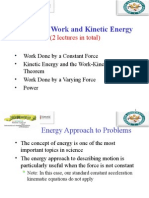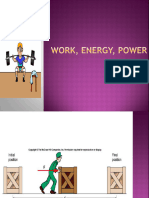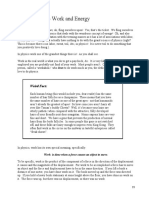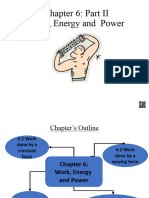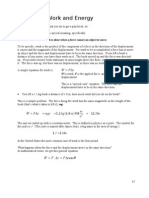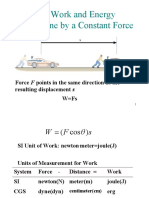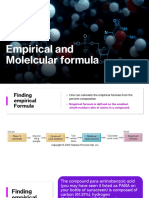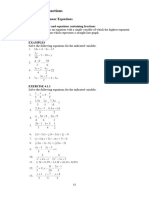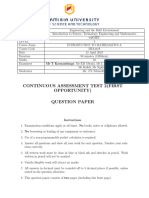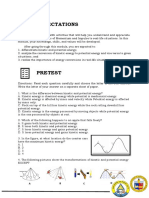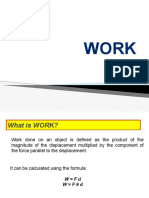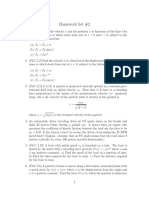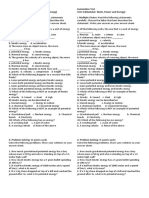0% found this document useful (0 votes)
26 views81 pagesChapter 6 Work in Progress
The lecture discusses the concepts of work and energy in physics, emphasizing the importance of conservation laws in analyzing translational motion. It defines work done by a constant force and introduces kinetic and potential energy, highlighting the work-energy principle which states that the net work done on an object equals the change in its kinetic energy. The lecture also includes examples to illustrate these concepts in practical scenarios.
Uploaded by
Lucas “Khumalo” KaunduCopyright
© © All Rights Reserved
We take content rights seriously. If you suspect this is your content, claim it here.
Available Formats
Download as PDF, TXT or read online on Scribd
0% found this document useful (0 votes)
26 views81 pagesChapter 6 Work in Progress
The lecture discusses the concepts of work and energy in physics, emphasizing the importance of conservation laws in analyzing translational motion. It defines work done by a constant force and introduces kinetic and potential energy, highlighting the work-energy principle which states that the net work done on an object equals the change in its kinetic energy. The lecture also includes examples to illustrate these concepts in practical scenarios.
Uploaded by
Lucas “Khumalo” KaunduCopyright
© © All Rights Reserved
We take content rights seriously. If you suspect this is your content, claim it here.
Available Formats
Download as PDF, TXT or read online on Scribd
/ 81
